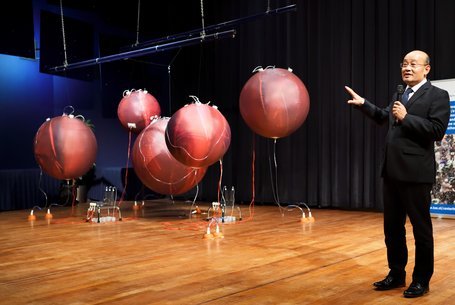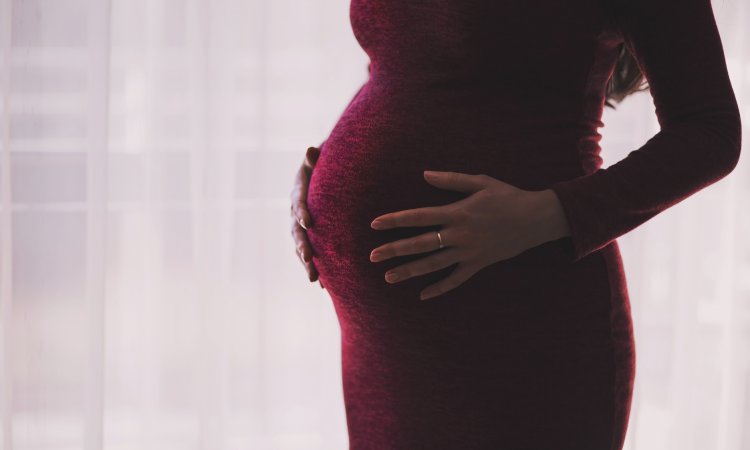Image source: Leonardo da Vinci, Studies of the foetus in the womb, marked as public domain, details at Wikimedia Commons
News • Multimillion research grant
One step closer to the artificial womb
The realization of an artificial womb has come one step closer, thanks to a new €2.9 million grant from the EU program Horizon 2020 for researchers in Eindhoven.
The goal of the artificial womb is to increase the chances of survival for extremely premature babies outside the body. Just one year ago, the artificial womb was presented as a first design during the Dutch Design Week. This grant will make it possible to create a working prototype within five years. Professors Frans van de Vosse and Loe Feijs from Eindhoven University of Technology (TU/e) and professor Guid Oei from Máxima Medical Center (MMC) and TU/e initiated the European consortium that received the grant.

Photo: Bart van Overbeeke
An artificial womb serves as a replacement for an incubator and artificial respiration. It is much more natural, because it resembles the conditions in an actual womb more closely. “Our goal with the artificial womb is to help extremely premature babies get through the critical period of 24 to 28 weeks,” says Guid Oei, gynecologist at MMC and part-time professor at TU/e. The chances of survival for these babies are low; approximately half of the babies that are born at 24 weeks die. And the ones that survive often suffer from lifelong chronic disorders such as brain damage, respiratory problems and/or retinal conditions that can possibly cause blindness. “With each day a fetus of 24 weeks continues to develop in an artificial womb, the chances of survival will increase. If we are able to prolong the fetal development of these children in the artificial womb to 28 weeks, we will have reduced the most serious risk of premature mortality to 15%,” Oei says.

Foto: Bart van Overbeeke / TU/e
“We will use different technologies to create the artificial womb,” says Frans van de Vosse, project coordinator and professor of Cardiovascular Biomechanics at the department of Biomedical Engineering at TU/e. “Premature babies are placed in a fluid-based environment, just like the natural womb. In this environment, there is no artificial respiration via the lungs. Instead, oxygen and nutrients are provided via an umbilical cord using an artificial placenta. The system that makes this possible constantly monitors the baby’s condition. Think of heart rate and oxygen supply, but also of brain and muscle activity. Smart computer models that simulate the baby’s condition provide the doctor with immediate support in the decision-making process with regard to the artificial womb’s settings.”
The Industrial Design of Embedded Systems group under supervision of Loe Feijs is active within the project as well. The group is developing a fetal practice doll that can accurately simulate extremely premature babies in an intensive care ward. This makes it possible to evaluate the artificial womb in a realistic test setting before it is used in clinics.
“During the next five years, we will conduct further research and test these technologies in a European collaboration, and continue to develop them until we manage to realize a first prototype of an artificial womb. That is a wonderful challenge,” says Guid Oei. This European consortium was initiated by TU/e and MMC, in collaboration with LifeTec Group, Nemo Healthcare, Politecnico di Milano and Universitätsklinikum Aachen. The partners of this consortium are trained in the different sub-areas of expertise that are needed to develop the artificial womb. By sharing expertise and combining forces, they aim to bring the realization of the artificial womb a big step closer.
Source: Eindhoven University of Technology (TU/e)
08.10.2019







